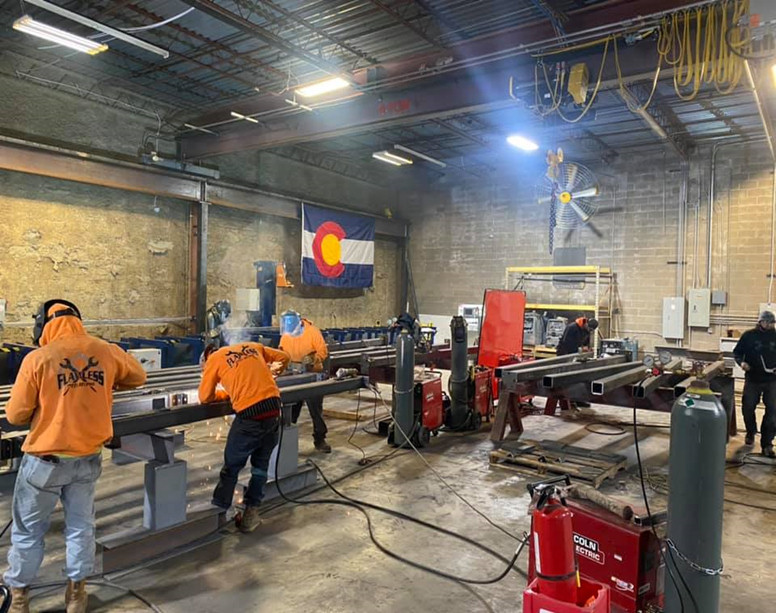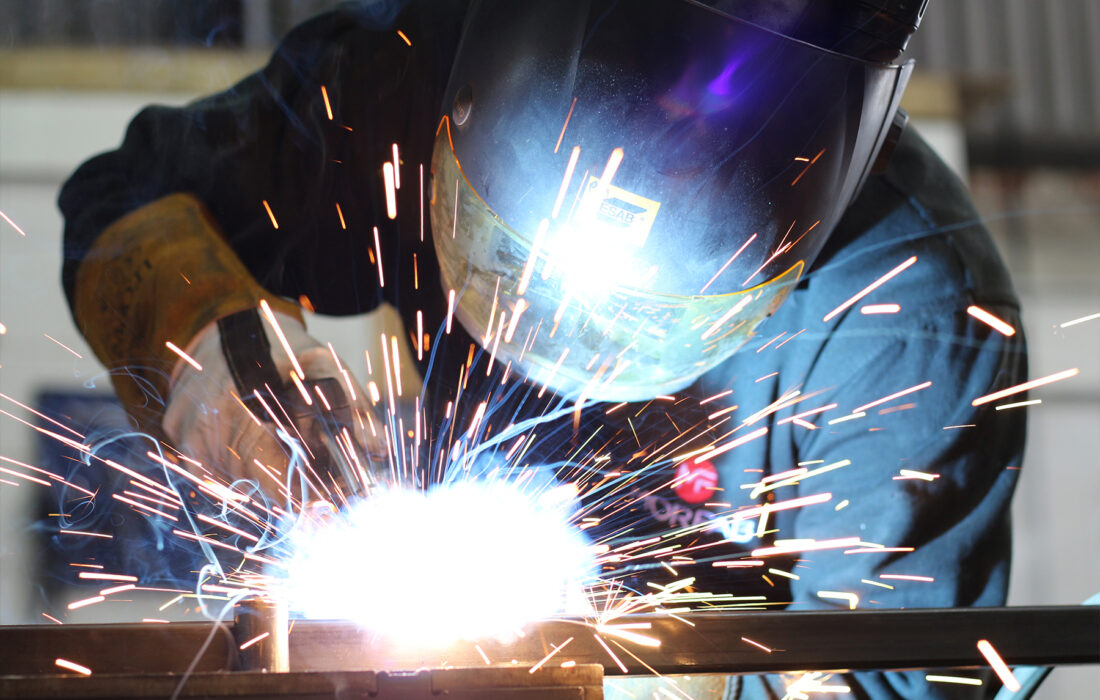Alpha Reo: Blazing A Trail in Reinforced Steel Solutions
Alpha Reo: Blazing A Trail in Reinforced Steel Solutions
Blog Article
The Ultimate Manual on Customized Steel Manufacture Solutions for Structural Projects
In the realm of architectural projects, the relevance of custom steel fabrication solutions can not be overemphasized. From the fundamental understanding of steel manufacture fundamentals to the detailed process of choosing one of the most suitable products, every action in this trip plays a critical role in the ultimate success of a task. As we navigate through the intricacies of layout considerations, fabrication procedures, and quality control procedures, an extensive manual serves as an assisting light for professionals seeking excellence in steel construction remedies. Keep tuned to uncover the insights that can reinvent the way structural jobs are come close to and executed.
Comprehending Personalized Steel Manufacture Essentials
Looking into the principles of custom-made steel construction supplies insight into the elaborate process of transforming raw steel into tailored structural components. Personalized steel manufacture is a customized production method that involves cutting, shaping, and assembling steel materials to develop distinct structures according to specific task demands. Comprehending the basics of custom steel fabrication is essential for guaranteeing the successful execution of structural tasks.
The process generally begins with the analysis of job specs and style requirements. This initial phase involves in-depth preparation and partnership between designers, designers, and fabricators to determine one of the most suitable technique for fabricating the steel parts. Precision is key during the manufacture process, as even small variances can impact the architectural stability of the final product.
Various techniques, such as reducing, welding, and shaping, are used to change raw steel right into the desired structural components. Experienced producers use sophisticated machinery and tools to make certain accuracy and consistency throughout the fabrication process. Quality assurance steps are applied to validate the stability of the produced components before they are put together on-site, guaranteeing compliance with sector requirements and project specifications.
Choosing the Right Steel Products

Primarily, the sort of architectural job and its particular demands play a vital duty in determining the most suitable steel materials. Aspects such as the load-bearing ability, environmental conditions, and wanted life expectancy of the structure will certainly dictate the grade and kind of steel that need to be made use of.
Moreover, the physical residential or commercial properties of the steel, including weldability, ductility, and stamina, have to straighten with the job's needs to assure ideal efficiency and longevity (steel fixing). Additionally, factors to consider such as rust resistance, cost-effectiveness, and schedule of the steel materials must likewise be thought about during the option procedure
Style Considerations for Architectural Jobs
Architectural projects require meticulous interest to make considerations to guarantee both functionality and safety are prioritized throughout the construction procedure. When it pertains navigate to this website to making structural jobs, numerous essential factors must be thought about to guarantee the success of the undertaking. First of all, the architectural honesty of the structure should be a top concern. This includes assessing tons, anxieties, and environmental elements to figure out one of the most appropriate design that can endure different conditions in time. Furthermore, considerations for the capability of the structure play an essential function in the layout procedure. Comprehending the purpose of the structure and how it will certainly be made use of aids in developing a design that optimizes performance and functionality. Including components that boost the aesthetics of the framework can better elevate the overall design. Stabilizing visual appeal, functionality, and security is important in developing successful architectural jobs that fulfill both visual and functional requirements. By meticulously thinking about these aspects during the layout phase, engineers and designers can make certain the structural project's success from conception to conclusion.
Streamlining Manufacture Processes for Effectiveness

Moreover, applying lean manufacturing principles can considerably improve performance in steel fabrication. By dig this reducing waste, maximizing workflow, and boosting interaction between different teams included in the construction procedure, projects can be completed more swiftly and with greater quality requirements.
Moreover, developing a well-organized production routine and process can assist in focusing on jobs, appointing resources efficiently, and conference task deadlines without delay. By having a clear strategy in position and routinely keeping an eye on development, any kind of prospective traffic jams or delays can be determined and dealt with quickly, guaranteeing efficient and smooth fabrication processes for architectural jobs.
Top Quality Control and Job Administration in Steel Construction
To guarantee the effective implementation of steel construction projects, meticulous top quality control actions and efficient task administration methods are crucial parts in preserving precision and meeting customer assumptions. Quality control in steel fabrication involves extensive examinations at different stages of the manufacture process to validate compliance with project specifications and market requirements. This includes product testing, dimensional checks, and weld evaluations to make sure architectural integrity and security.
Task administration plays an essential duty in coordinating the numerous elements of steel fabrication jobs, such as scheduling, source allotment, and interaction among employee. A distinct project strategy with clear goals, milestones, and timelines helps to monitor progress and attend to any kind of possible concerns proactively. Effective interaction between all stakeholders, including customers, designers, service providers, and fabricators, is important for ensuring that the job advances smoothly and meets the desired quality standards.
Final Thought
Finally, custom steel construction plays a critical function in structural projects by offering customized solutions making use of the ideal products and layout considerations. Efficiency in construction processes, high quality control, and reliable task monitoring are essential for successful outcomes. By comprehending the basics of personalized steel construction and applying streamlined processes, job teams can deliver sturdy and high-quality frameworks that fulfill the certain needs of their clients.
Custom steel fabrication is a customized production method that includes cutting, shaping, and putting together steel materials to create unique frameworks according to certain job demands.To ensure the effective implementation of steel fabrication jobs, thorough top quality control procedures and effective project administration steel fixing methods are important components in keeping accuracy and meeting customer assumptions. Quality control in steel fabrication entails strenuous examinations at various stages of the manufacture procedure to verify conformity with project requirements and market standards (steel fabricators melbourne).Task administration plays an essential duty in collaborating the various elements of steel fabrication jobs, such as scheduling, resource allotment, and interaction among group members.In verdict, customized steel manufacture plays an important role in structural tasks by offering customized services utilizing the ideal products and design factors to consider
Report this page